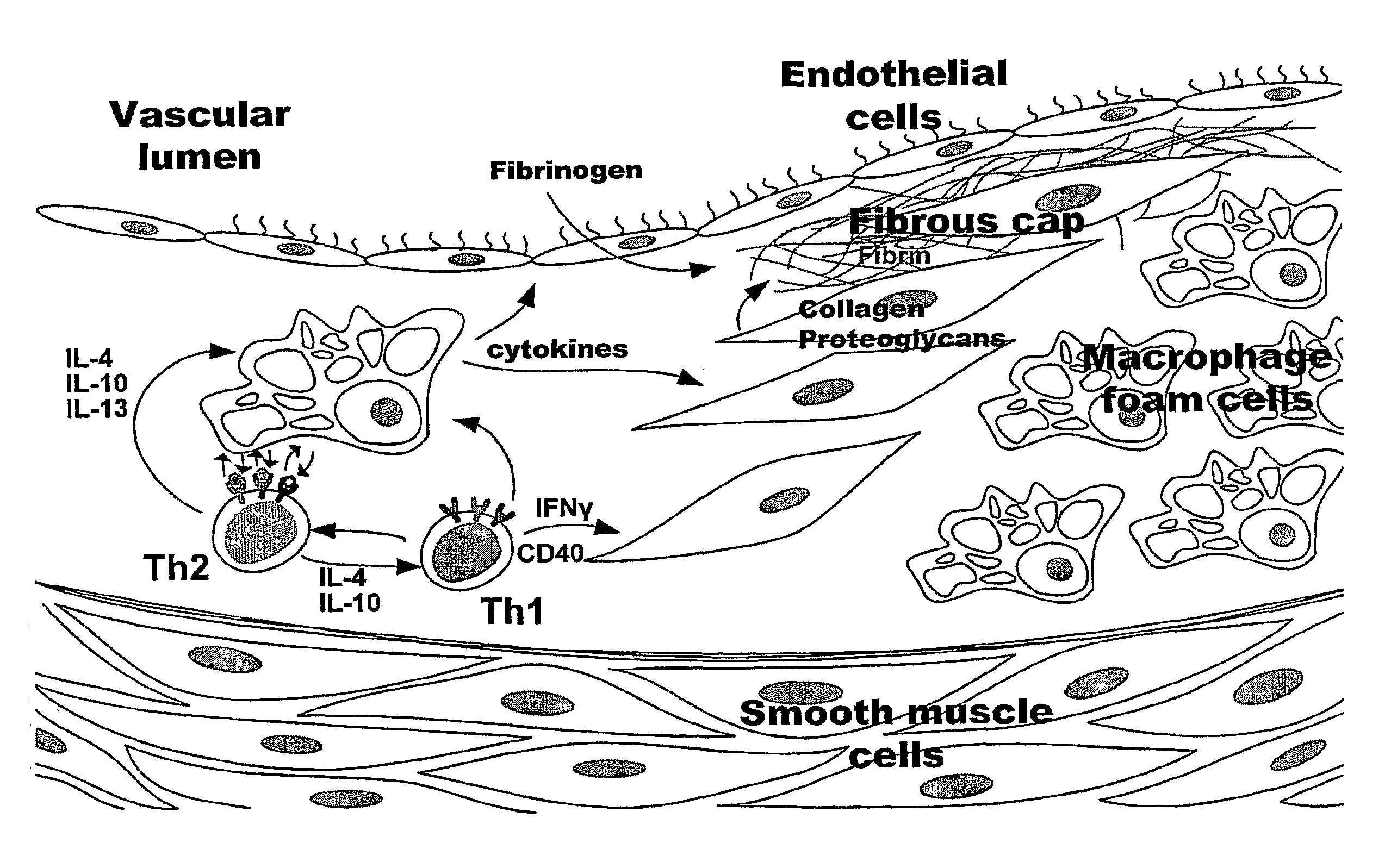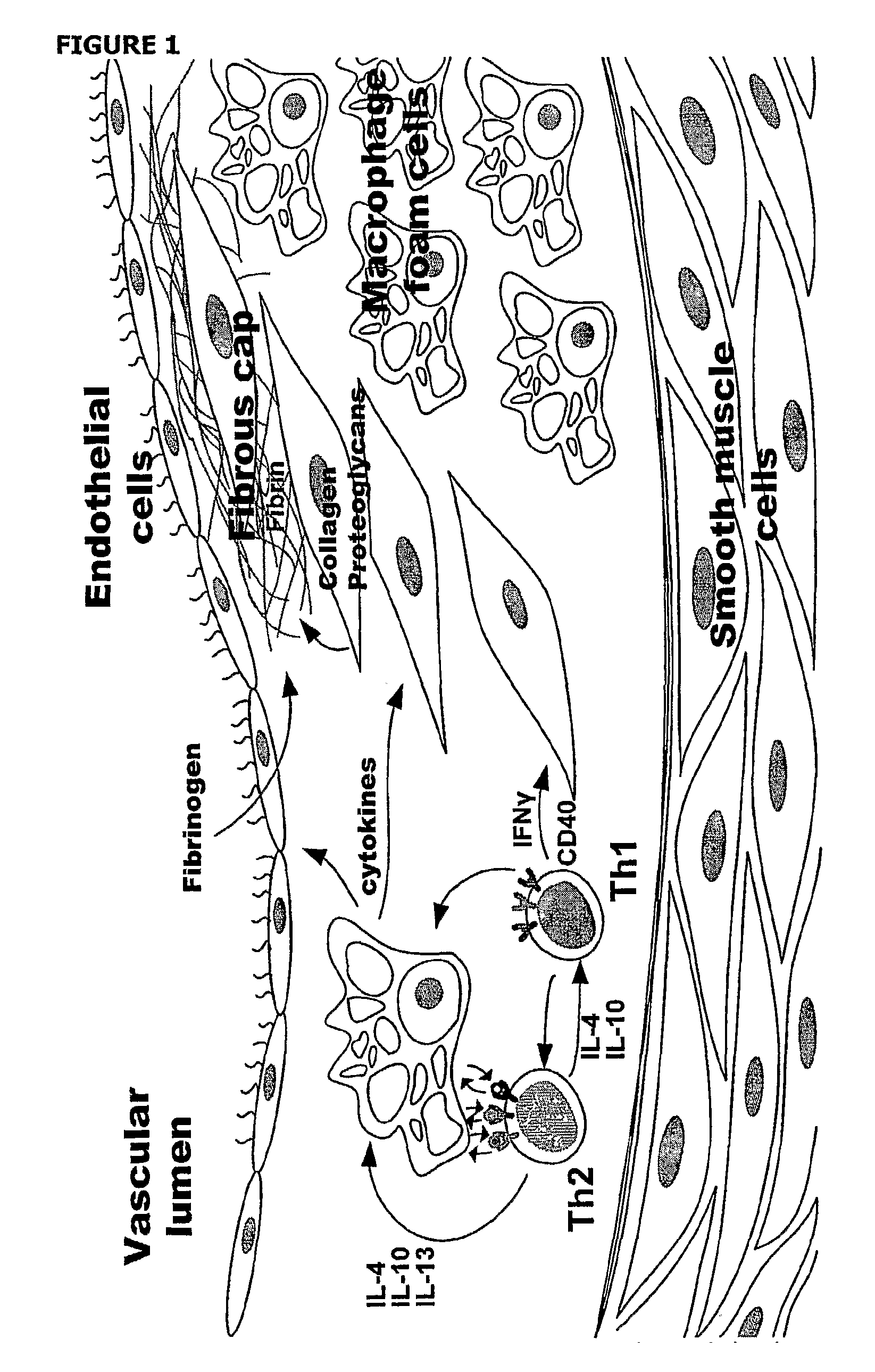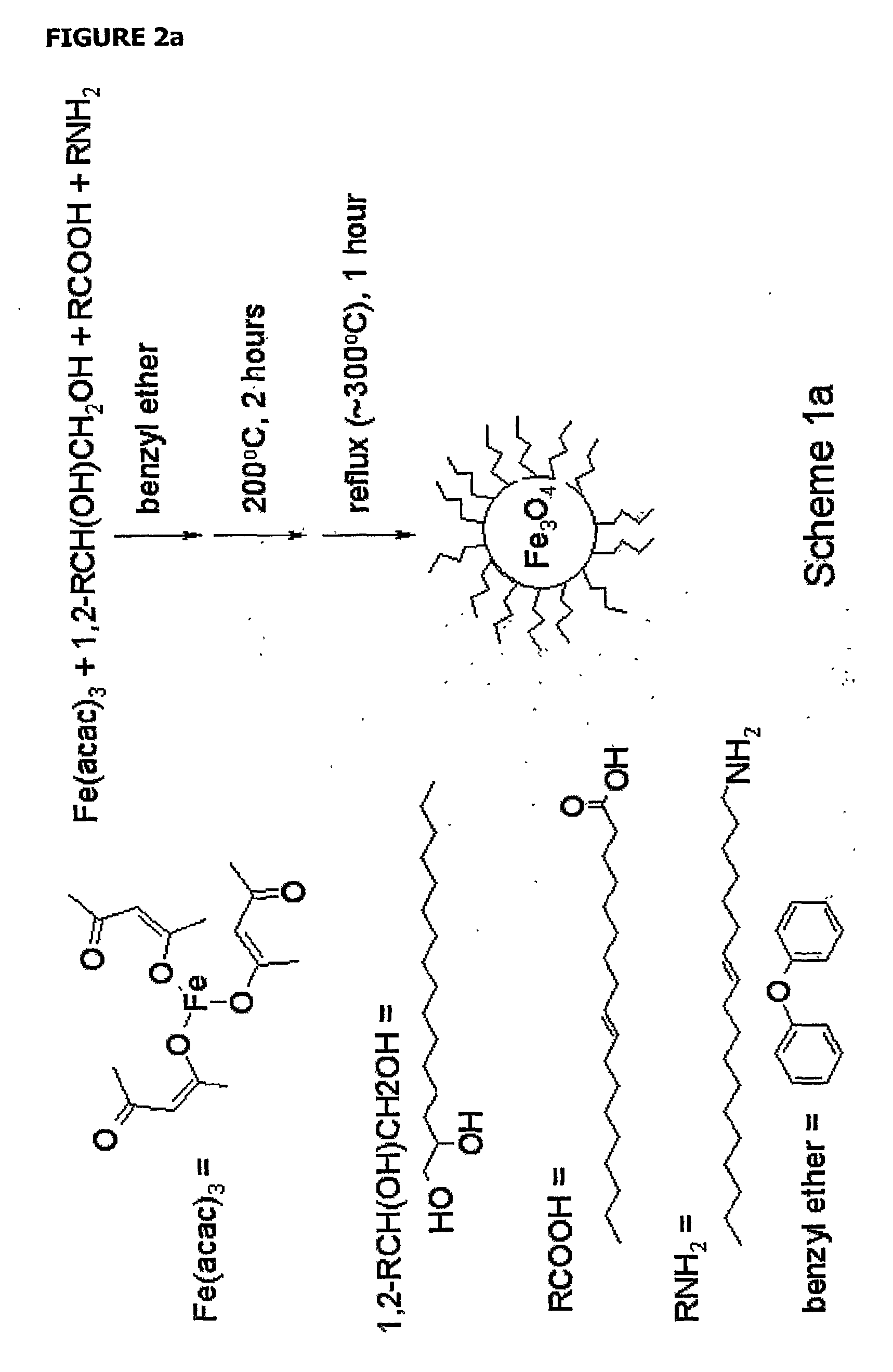Nanoparticles for Imaging Atherosclerotic Plaque
a technology of nanoparticles and plaques, applied in the field of coating nanoparticles, can solve the problems of endothelial dysfunction and modification of lipids, ischemia of distal tissues, myocardial infarction or stroke, etc., and achieve the effects of low dose of contrast agents, low dose, and high specificity
- Summary
- Abstract
- Description
- Claims
- Application Information
AI Technical Summary
Benefits of technology
Problems solved by technology
Method used
Image
Examples
example 1
Dextran Sulfate Coated Iron Oxide Nanoparticles Created by Layering
[0061]The iron oxide core was synthesized using a method by Sun and colleagues (Sun et al., 2004) for synthesis of oleic acid / oleylamine coated particles that allows for precise control of particle size. Control of particle size is useful for modeling relaxation properties of the particles and tailoring optimal contrast agent design, as relaxation is size dependent (Yung et al., 2003, Koenig et al., 2002, Roch et al., 1999, Koenig et al., 1995). The general synthesis is shown in scheme 1 (FIG. 2), in which the iron oxide core is formed, transferred to water, and then coated with dextran sulfate via a layer-by-layer (LbL) technique. Magnetite cores were formed using a protocol by Sun (Sun et al., 2004) in which an iron precursor is oxidized to form 6 nm iron oxide. The oleic acid / oleylamine stabilized iron oxide particles were then transferred to water using tetramethylammonium hydroxide (TMAOH) (Euliss et al., 2003)....
example 2
Dextran Sulfate Doped Iron Oxide Nanoparticles
[0063]The initial dextran coated particle synthesis (Palmacci et al., 1993, Paul et al., 2004) was altered to include a small amount of dextran sulfate mixed with reduced dextran (rd) to form DS-doped-rdUSPIOs. Smaller particles less than 50 nm may be ideal as their smaller size will increase circulation time and reduced clearance by the reticuloendothial system (Pratten et al., 1986, Bowen et al, 2002).
[0064]We modified the USPIO synthesis proposed by Paul and colleagues (Paul et al., 2004) to include a small proportion (˜5%) of dextran sulfate mixed in with the reduced dextran. The general core synthesis is as follows: FeCl2+2FeCl3→[Fe(OH)2+2Fe2O3.dextran (or dextran sulfate)]→Fe3O4.dextran / dextran sulfate; where the brackets represent an intermediate step (Thomassen et al., 1991). Using a very small percentage of dextran sulfate may allow the iron oxide cores to form with a small amount of sulfate groups attached for recognition by th...
example 3
Silica Coated Iron Oxide Nanoparticles
[0065]Synthesis
[0066]Silica coated particles were synthesized. Silica particles have been widely used for stabile nanoparticles platforms as they are stabile in a wide pH range (Klotz et al., 1999) and silica, due to its polyanionic nature, has been shown to be recognized by the macrophage SR (Platt et al., 2001). We show here that silica coated particles are recognized by macrophages and can be used to label atherosclerotic plaques. The general synthetic route is shown in scheme 2 (FIG. 4). The iron oxide cores were again synthesized according to the Sun protocol (Sun et al, 2004), and transferred to water as before (Euliss et al., 2003). Silica coated particles were then made by the absorption of Si onto the iron oxide by base hydrolysis of tetraethylorthosilicate (TEOS) (Lu et al., 2002).
[0067]FIG. 5 is a TEM image of 80 nm Silica coated particles demonstrating a 10 nm iron oxide core. Dynamic light scattering showed an overall particle diame...
PUM
| Property | Measurement | Unit |
|---|---|---|
| particle size | aaaaa | aaaaa |
| particle size | aaaaa | aaaaa |
| particle size | aaaaa | aaaaa |
Abstract
Description
Claims
Application Information
 Login to View More
Login to View More - R&D
- Intellectual Property
- Life Sciences
- Materials
- Tech Scout
- Unparalleled Data Quality
- Higher Quality Content
- 60% Fewer Hallucinations
Browse by: Latest US Patents, China's latest patents, Technical Efficacy Thesaurus, Application Domain, Technology Topic, Popular Technical Reports.
© 2025 PatSnap. All rights reserved.Legal|Privacy policy|Modern Slavery Act Transparency Statement|Sitemap|About US| Contact US: help@patsnap.com



